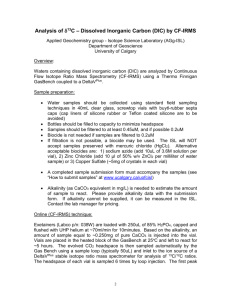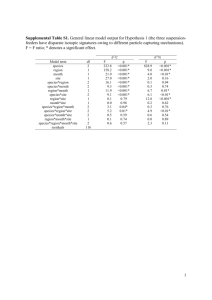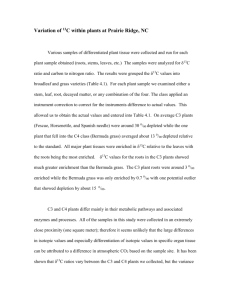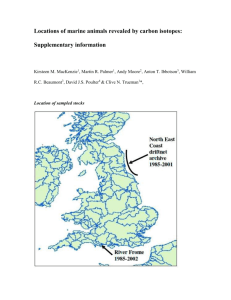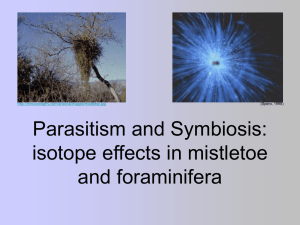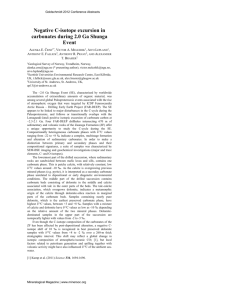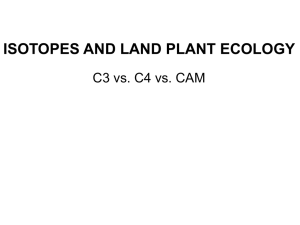Welding of Stainless Steel with 500 w sealed CO2 Lasers
advertisement
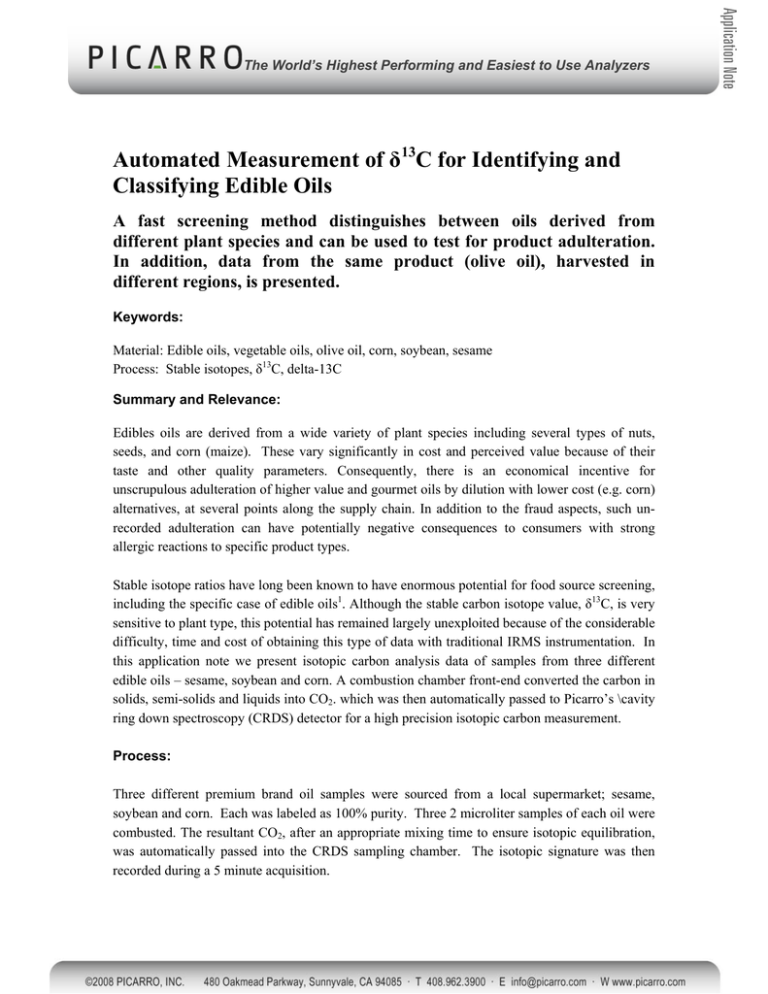
The World’s Highest Performing and Easiest to Use Analyzers Automated Measurement of δ13C for Identifying and Classifying Edible Oils A fast screening method distinguishes between oils derived from different plant species and can be used to test for product adulteration. In addition, data from the same product (olive oil), harvested in different regions, is presented. Keywords: Material: Edible oils, vegetable oils, olive oil, corn, soybean, sesame Process: Stable isotopes, δ13C, delta-13C Summary and Relevance: Edibles oils are derived from a wide variety of plant species including several types of nuts, seeds, and corn (maize). These vary significantly in cost and perceived value because of their taste and other quality parameters. Consequently, there is an economical incentive for unscrupulous adulteration of higher value and gourmet oils by dilution with lower cost (e.g. corn) alternatives, at several points along the supply chain. In addition to the fraud aspects, such unrecorded adulteration can have potentially negative consequences to consumers with strong allergic reactions to specific product types. Stable isotope ratios have long been known to have enormous potential for food source screening, including the specific case of edible oils1. Although the stable carbon isotope value, δ13C, is very sensitive to plant type, this potential has remained largely unexploited because of the considerable difficulty, time and cost of obtaining this type of data with traditional IRMS instrumentation. In this application note we present isotopic carbon analysis data of samples from three different edible oils – sesame, soybean and corn. A combustion chamber front-end converted the carbon in solids, semi-solids and liquids into CO2. which was then automatically passed to Picarro’s \cavity ring down spectroscopy (CRDS) detector for a high precision isotopic carbon measurement. Process: Three different premium brand oil samples were sourced from a local supermarket; sesame, soybean and corn. Each was labeled as 100% purity. Three 2 microliter samples of each oil were combusted. The resultant CO2, after an appropriate mixing time to ensure isotopic equilibration, was automatically passed into the CRDS sampling chamber. The isotopic signature was then recorded during a 5 minute acquisition. Results: Photosynthetic carbon isotope fractionation is related to carbon dioxide uptake and enzymatic processes2. The so-called C3 plants, named due to the number of carbons in an intermediate molecule in the relevant biochemical pathway, discriminate more heavily against 13C than the C4 plants and therefore have more negative δ13C values. So, as expected, the data shows a dramatic difference between the oils from C3 plants (sesame, soybean) and that from corn, which is a C4 type plant. Second, even the two oils from C3 plants are clearly distinct and importantly, this new method produces absolute values that are in agreement with previously published data3. And finally, the data points are very consistent for each oil; the instrument’s excellent precision is confirmed with standard deviations between 0.17 and 0.5‰. -12 -14 Corn Oil, δ13C = -15.08‰; SD = 0.50‰ δ13C (‰) -16 -18 -20 -22 -24 Sesame Seed Oil, δ13C = -28.28‰; SD = 0.24‰ -26 -28 Soybean Oil, δ13C = -29.80‰; SD = 0.17‰ -30 -32 Samples Table 1, below documents the comparison between the Picarro data and published IRMS results3. The correlation provides validation that this time-based optical technique is clearly capable of rivaling IRMS for these applications PICARRO, δ13C (‰) IRMS, δ13C (‰) Corn oil -15.08 -15.0 Sesame seed oil -28.28 -27.9 Soybean oil -29.80 -30.1 2ul Inj. Vol. Table 1. Comparison of δ13C values of selected edible oils. Data from Picarro CRDS and IRMS, ref. 3 In a further development of this application, a series of olive oils were analyzed. The olive oils were sourced as premium branded products from Spain, Italy, Greece, Turkey, Lebanon and Australia. The data (see Table 2), was correlated with IRMS data. PICARRO, δ13C (‰) S.D. (‰) (n=3) IRMS, δ13C (‰) Spain -28.95 0.18 -28.94 Italy -28.98 0.05 -29.27 Greece -29.29 0.02 -29.21 Turkey Lebanon Australia -30.34 -29.11 -31.23 0.11 0.23 0.01 -30.32 -28.87 -31.19 2ul Vol. Table 2. Comparison of δ13C values of selected olive oils. Once again, the excellent correlation and the superb precision of the results (see column 3) are indicative of the strengths of this instrument. Comments: A new generation of CRDS-based analyzers enables simple and fast measurement of stable isotope ratios of carbon, oxygen and hydrogen. This study confirms that δ13C values derived from these instruments can be used as a fast screening tool for edible oil adulteration: to determine whether higher value oils have been diluted with corn-derived oil. References: 1. Carbon Stable Isotopes and Olive Oil Adulteration with Pomace Oil, Angerosa et al, J. Agric. Food Chem., 1997, 45 (8), pp 3044–3048 2. Carbon Isotope Discrimination and Photosynthesis, G D Farquhar et al, Annual Review of Plant Physiology and Plant Molecular Biolog, Vol. 40: 503-537 (1989) 3. Emerging Techniques in Vegetable Oil Analysis Using Stable Isotope Ratio Mass Spectrometry, Rhodes et al, Grasas y Aceites, 34 Vol. 53. Fasc. 1 (2002), 34-44

